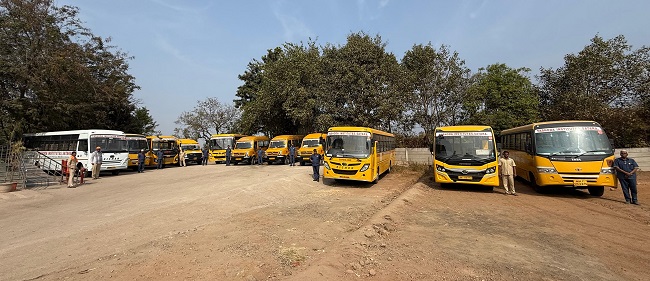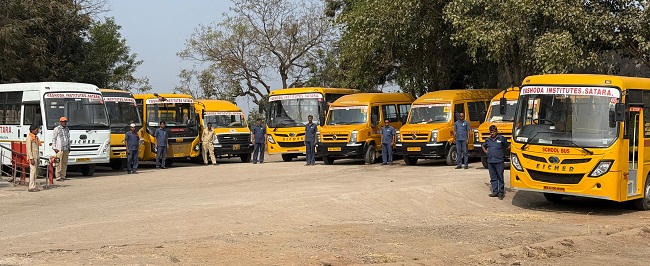Transportation
College bus facilities refer to the infrastructure, services, and management systems that ensure safe and efficient transportation for students to and from college. These facilities typically include:
1. Bus Depots :
Locations where college buses are stored, maintained, and dispatched. They may also serve as a base for bus drivers.
2. Bus Stops :
Designated locations where students wait for the bus. These stops should be safe, easily accessible, and strategically located along bus routes.
3. Bus Routes :
Pre-planned paths that college buses follow to pick up and drop off students. Routes are designed to be safe, efficient, and accessible for all students, including those with disabilities.
| Title | Downloads |
|---|---|
| Bus Transportation Routes | Download |
4. Safety Measures :
Protocols such as seat belts, crossing guards, and safety drills to ensure students safety during travel. Buses are often equipped with cameras and GPS tracking for monitoring purposes.
5. Bus Maintenance :
Regular upkeep and repairs to ensure buses are in safe operating condition, which may include inspections, cleaning, and routine maintenance.
6. Staffing :
Trained bus drivers and support staff who are responsible for ensuring student safety and maintaining order during transportation. Drivers often undergo background checks, specialized training, and certifications.
7. Communication Systems :
Tools like two-way radios, mobile apps, or tracking systems that help coordinate buses, monitor student safety, and provide real-time information to parents, teachers, and college administrators.
8. Weather and Environmental Considerations :
Planning for adverse weather conditions, ensuring buses are equipped to handle snow, rain, or extreme temperatures, and adjusting routes or schedules as needed.


